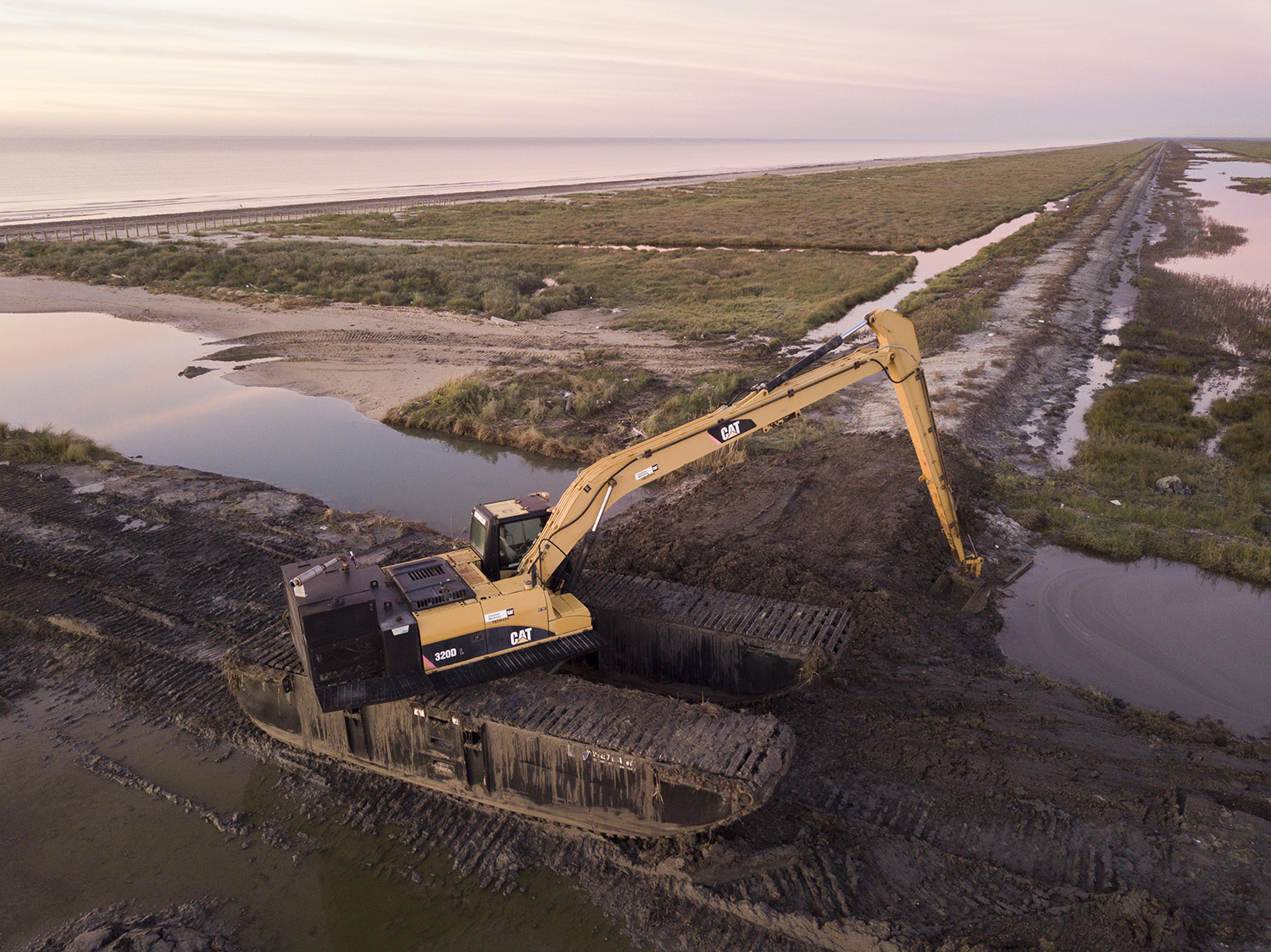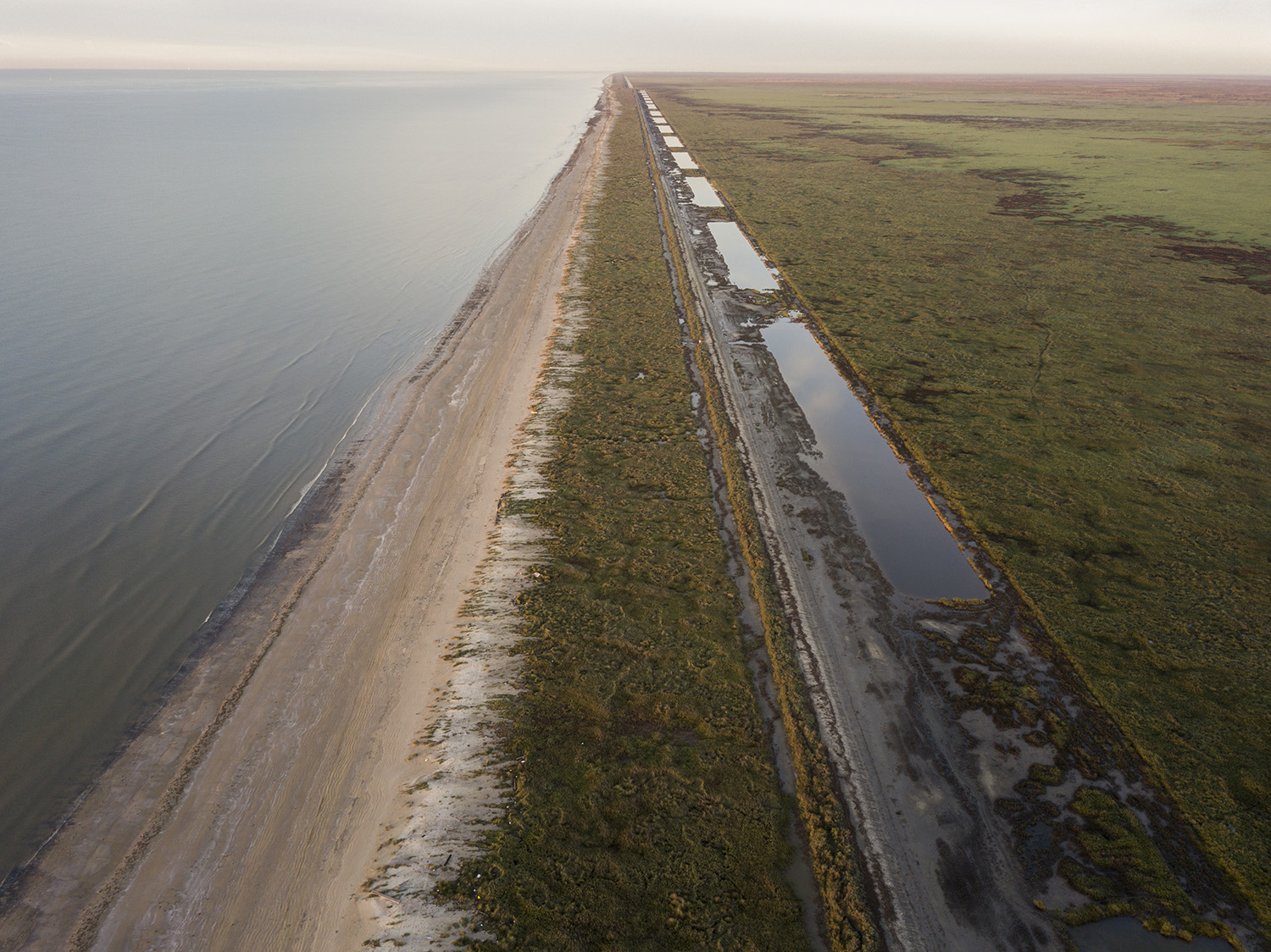The Texas coastline is slowly disappearing. Here's how one community is coping.
/https://static.texastribune.org/media/images/2017/12/27/DUNES_MS_1_TT.jpg)
The banana water lilies that once filled Jefferson County's Salt Bayou marsh started dying off years ago.
The aquatic plants, with their elegant white and yellow blooms, used to pepper the 139,000-acre wetland in Southeast Texas – a hub for wildlife, boaters and commercial fisheries.
Their disappearance has been linked to the development of a shipping channel that hampered the flow of freshwater into the marsh. But scientists say it's also the symptom of a problem that haunts the entire Texas coast: The shoreline is eroding.
Subsidence, sea level rise and storm surges have all contributed to significant land loss, averaging 4 feet per year along the state's coastline, according to the Texas General Land Office. In some places, more than 30 feet of shoreline disappears underwater annually.
The result?
Ecologically-sensitive areas near the coast, like the Salt Bayou marsh, are more prone to inundation by seawater, which kills off salt-sensitive aquatic plants and animals. With less space between sea and shore, it can also make neighborhoods and industry more vulnerable to hurricane storm surges.
Todd Merendino, a manager at the conservation-focused group Ducks Unlimited, said sand dunes used to line the shore near the Salt Bayou marsh, forming a crucial buffer between the Gulf of Mexico and the millions of dollars' worth of industrial infrastructure that lie inland. The dunes are "all gone now," he said.
"One day, you wake up and you go, 'Wow, we got a problem,'" Merendino said. "And it's not just an isolated problem where one swing of the hammer is going to fix it."
The problem has inspired a coalition of strange bedfellows in Jefferson County. Local leaders, environmental activists and industry representatives are working together to execute a variety of projects — some bankrolled by BP oil spill settlement funds — to rehabilitate the marsh and protect the area's industrial complex.
One initiative undertaken is the construction of a temporary 20-mile berm along the marsh's coastal perimeter on a stretch of the beach there called McFaddin. The plan is to dredge sand from the ocean bottom about a mile and a half offshore and spread it over the clay berm. Vegetation will be grown on top of it to provide a habitat for migratory birds. And the plants' roots will make the dunes more resistant to erosion.
The project is crucial to protecting both the environment and industry, said Jefferson County Judge Jeff Branick.
The county "is home to some of the most critical energy resources in the United States. We provide a significant portion of [the country's] gasoline, diesel fuel, and a majority of it's commercial and military aviation fuel," Branick said. The coastal system is "too important for us not to do something to protect."
While still underway, there’s already one big sign the group's efforts are paying off: The return of freshwater plants like the banana water lilies, which reappeared in the Salt Bayou marsh last summer.

A "drop in the bucket"?
The primary aim of dune restoration at McFaddin Beach is to keep saltwater out of the marsh. But such beach renourishment projects have increasingly been used across the country as a way to curb the effects of coastal erosion, said Jens Figlus, an assistant professor in the ocean engineering department at Texas A&M University.
Erosion happens naturally because the coast is a battleground between land and water, Figlus said. But storms and rising sea level are shifting coastlines and hastening erosion problems across the globe. That leaves regions with marshy, compactable soil — like Jefferson County — particularly vulnerable to the process' effects, Figlus said.
The local group working to shore up the coast there found that the county's shoreline is retreating more than 9 feet per year, yielding a loss of nearly 36 acres — or around 27 football fields.
The idea behind renourishment projects is to "provide the erosion processes more material to play with," Figlus said, "so they're occupied with that new material rather than with the parts that should be protected behind those dunes and beaches."
Still, Figlus said the new sands tend to erode faster than what was originally there. And they don't stop storms or the erosion process from occurring. Knowing that, he said it's important to scrutinize how tax dollars are spent on beach renourishment projects, since some may consider the effort a "drop in the bucket."

The cost of the project
To proponents of the McFaddin Beach and dune restoration plan, the effort is clearly worth it.
Most of the more than $25 million that's been earmarked for the project comes from settlement money that followed a massive BP oil spill in 2010. Meant to repair environmental damages, the funds are disbursed by several federal and state agencies, including the Texas Commission on Environmental Quality.
The estimated cost of the project could reach $65 million, said Tim Richardson, a consultant on the project, who previously worked on recovery efforts that followed the Exxon Valdez oil spill. But he said the costs of not completing it are much higher.
Without the dune ridge, "You would have an expansion of the Gulf of Mexico into extremely high-value, national energy and national security assets," Richardson said. Here, "the environmental goal matches up exactly with what industry and homes and businesses need to avoid losses."
Disclosure: BP and Texas A&M University have been financial supporters of The Texas Tribune. A complete list of Tribune donors and sponsors can be viewed here.
Information about the authors
Learn about The Texas Tribune’s policies, including our partnership with The Trust Project to increase transparency in news.
/https://static.texastribune.org/media/profiles/Shannon_Najmabadi.jpg)